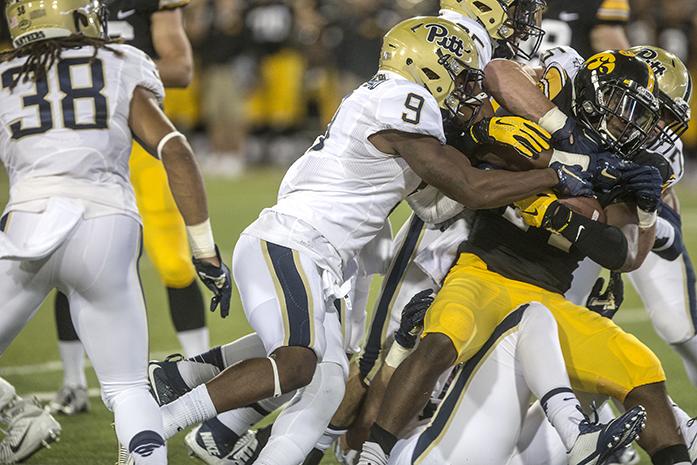By Charlie Green
[email protected]
No. 10 Iowa’s defensive play in 2015 has been a major part of the team’s 7-0 start. The group ranks third in the Big Ten in yards allowed per game (294.3) and fourth in points (15.3).
But while the unit has been elite against the run, its play against the pass has been inconsistent. Both the lack of regular pressure and mistakes in coverage have exposed the group at times, but so far, a high number of turnovers have helped to alleviate the struggles, as has the suffocation of opposing running backs.
Passing yards per game: 220.1 (eighth in the Big Ten)
Despite the absence of a truly prolific passing team on their schedule, the Hawkeyes rank in the bottom half of the conference in passing yards allowed per game.
Against Illinois on Oct. 10, Illini quarterback Wes Lunt threw for 317 yards, taking advantage of sometimes underwhelming coverage by Iowa’s secondary.
Iowa State and Pittsburgh also exposed the defensive backfield at times, and the team probably will see the best quarterback on its regular season on Nov. 7 when it travels to Indiana to face Nate Sudfeld and the Hoosiers. Sudfeld is way ahead of other Big Ten quarterbacks in terms of yards per game, averaging nearly 300.
A more consistent pass rush, even if sack numbers aren’t necessarily there, is one way the Hawks can quell a strong passing attack. Another way they can is to keep coming up with turnovers.
Turnover margin: Plus-seven (third in the Big Ten)
Part of the solid turnover margin is a credit to the offense, which has given up the ball eight times by way of three picks and five fumbles. The defense has forced 15 turnovers, ranking No. 2 in the conference.
Desmond King’s 6 interceptions account for most of the margin. Seven other Big Ten defenders have 3 interceptions to tie for second.
Overall, the team has nine on the season, along with six recovered fumbles. Turnovers against the Hawkeyes can be especially debilitating, considering how they can run the ball and control the clock.
Basically, if a team turns the ball over to Iowa’s offense, it might be a while before it gets the ball back.
Red-zone appearances allowed: 15 (third in the Big Ten)
First of all, Iowa’s defense isn’t allowing teams to get into the red zone very often. Only Michigan and Wisconsin, statistically the league’s top two units, have allowed fewer trips.
Of the red-zone opportunities, opponents have converted them into points 73 percent of the time, a mark that ranks second in the Big Ten. Seven of the 11 red-zone scores have been touchdowns, with only one coming via the run.
Rush yards allowed per game: 74.1 (second in the Big Ten)
So the passing defense bends, and sometimes breaks near the end zone, but Iowa’s incredible play against the run the past few weeks has turned teams one-dimensional.
Both Northwestern and Wisconsin rely heavily on the run but threw the ball 43 and 38 times respectively against the Hawks.
That can pad numbers through the air, but if Iowa is forcing a team into a style it isn’t comfortable with, then overall the defense is doing its job.



